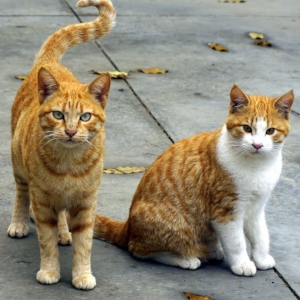5 Things Your Cat is Going to Love
/Do you ever wonder what your cats do when they’re alone? Most cats are always at home. It is important to spend time with them; even if they’re independent animals they need the love of their owner. Obviously, some cat owners cannot always be there with them and are out of their homes for long periods of time. If you’re one of those owners, here are some things your cat is going to love having when you’re not around. If you like being at home with your kitty, these items will spice up your day to day life.
1. Toys Containing Catnip
A toy with catnip might become your cat’s favourite object. Catnip stimulates cats, making them hyper and active. For a pet that stays at home most of the time, this will help your furry friend be healthy and entertained. If your’e not sure how your cat might react to catnip, check out How Much Do You Know About Your Cat? or contact an expert to appease your worries.
2. A Laser
If you own a cat, you know that any reflection of the sun from your mirror or even from your phone makes them go crazy. This is why you might want to consider getting a laser to make things more fun. Since cats are natural hunters, the moving red dot satisfies their hunting instinct. Unlike other toys, a laser pointer can be aimed in different directions, making it seem like real moving prey. But don’t let the laser pointer be the only toy your cat has, as it can become maddening for them to never be able to actually catch the “prey”. To avoid this, it is recommended to point the laser to an actual toy so they get the satisfaction of catching prey.
3. A Feather Teaser
Take-out cat teasers are a great choice for your cat, especially if yours doesn’t have access to the outside. It is a good toy to interact with your furry friend. Cats love them, especially if they have feathers on. This is due to cats’ perception of the feathers: they believe it is actual prey. Teasers are designed to keep your cat alert and active, so it not only creates something both you and your cat can do, but promotes a healthy lifestyle as well.
4. A Drinking Fountain
This is not a necessary product, but it certainly is something your cat will appreciate. Cats are considered very clean animals: they like to clean themselves everyday, they like their litter box cleaned everyday, and most importantly, they want their food containers cleaned everyday. Most cats won’t touch their water if its been there for a long time or isn’t crystal clear. They’d rather drink from the toilet than drink dirty water. This is where a drinking fountain would come in handy. The drinking fountain re-circulates and filters the water, making water that’s been sitting around all day fresh-tasting, and encouraging your cat to drink more. Because the water in a drinking fountain goes through a charcoal filter to remove odors and impurities, it is healthier for your cat than stale water that has been standing and collecting debris.
5. An Interactive feeder
Instead of using a normal bowl for your cat’s food, why not try an interactive feeder? This device helps cats have fun even when eating. An interactive feeder stimulates cats and makes them work to get their food. It helps your furry friend be active and gives them something to do. If you’re trying to get your cat to lose weight this is a device worth trying.
Even though cats are more laid back animals, they do need their daily dose of exercise. By using products like the ones above, not only are they entertained and focused, but you create an opportunity to form a stronger bond with your pet. These little details, from toys to feeders, will be greatly appreciated by your furry friend, but most importantly they will appreciate the time and care you give them.
Clarissa L. Flores
Clarissa L. Flores is a 19 year-old in the Professional Writing program at Algonquin Colllege. Originally from Mexico she came to Canada to expand her knowledge on writing, turning a hobby into a career. If she’s not listening to music or daydreaming, she probably has her nose in a book.








